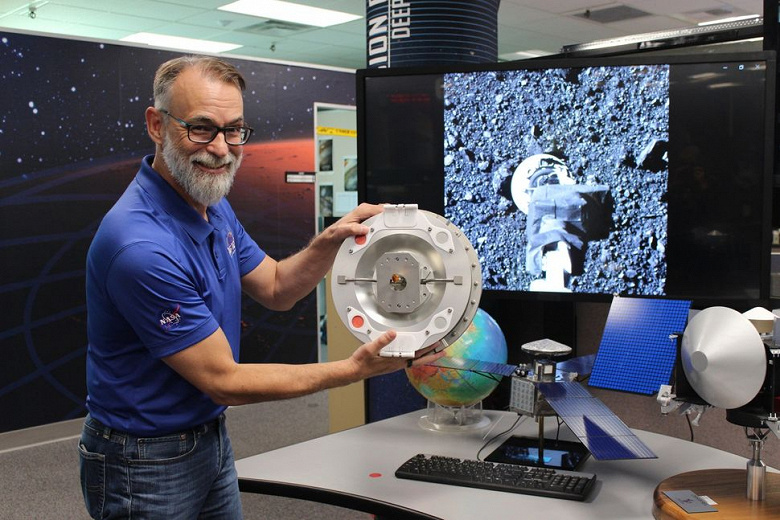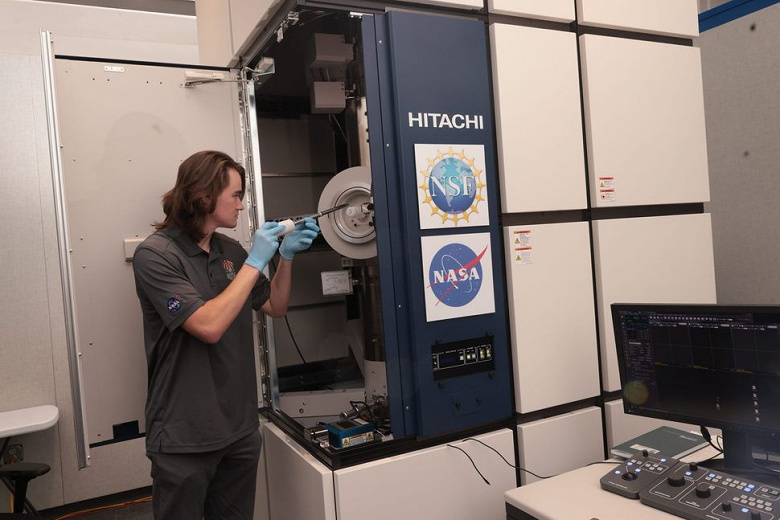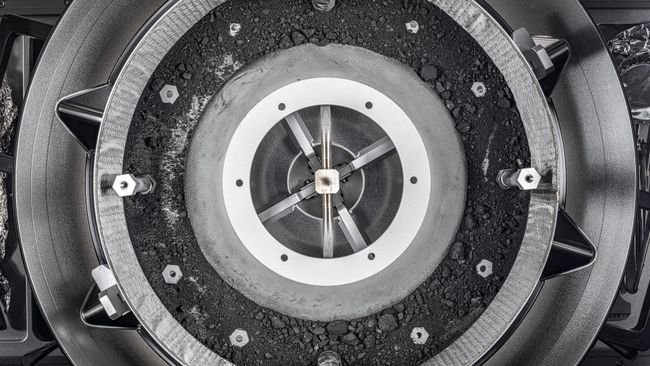“We will be busy for a very long time. For us, this is a huge amount of research”
Scientists continue to actively study samples of the asteroid Bennu obtained during the successfully completed NASA OSIRIS-REx mission. After a seven-year journey to this space object, the samples were parachuted into Utah and transported to the Astromaterials Analysis Laboratory at the University of Arizona for detailed study.
One of the key points of this mission is that these samples contain remnants of material that formed during the formation of the solar system about 4.5 billion years ago. This makes them valuable for understanding the processes that occurred in the earliest stages of the development of our Solar System.
Scientists began studying the samples using various instruments and methods of analysis at the atomic scale. At the beginning of the study, about 200 milligrams of material was obtained for analysis. According to the mission's principal investigator, Dante Lauretta from the University of Arizona, scientists already have at their disposal more than 1,000 particles larger than half a millimeter, as well as 28 particles larger than a centimeter. The largest particle in the sample measures 3.5 centimeters.
One of the significant findings of the study is that the Bennu samples contain significant amounts of water. In addition, the samples are also rich in carbon, nitrogen, sulfur and phosphorus. The presence of these elements suggests that asteroid Bennu has a connection to the early history of the solar system and may contain information about the processes that led to the emergence of life on Earth.
To present the results of the study, including all the details and discoveries, the scientists intend to present their results at the 55th Lunar and Planetary Sciences Conference, which is scheduled for next month in Texas. As Dante Lauretta noted, more than 70 abstracts with scientific results have already been submitted to the conference, and in the near future these studies will be reported to the whole world.

One of the important discoveries made during the study of the asteroid Bennu is that the fragments of this space object are different from all other meteorites studied through isotope analysis. As Dante Lauretta noted, the Bennu fragments have a unique isotopic signature that has not previously been observed in other samples. This indicates that there are materials that we do not have access to through the study of meteorites, and the asteroid Bennu may provide new clues to understanding the processes occurring in the Universe.
Another interesting aspect of the study is the presence of phosphates in samples of the asteroid Bennu, which were found in high concentrations. This discovery is associated with extraterrestrial oceans and leads to speculation that the asteroid Bennu may be a fragment of an ancient oceanic world. This asteroid may contain information about the formation of life in our planetary system, and its material provides the opportunity for a more in-depth study of life support processes.
Revealing the history of asteroid Bennu – an amazing task that requires years of effort and coordination. As Professor Thomas Zega noted, the university's Lunar and Planetary Laboratory was actively involved in this process, from mission design to sample analysis on Earth. He also emphasized that the OSIRIS-REx mission is a phenomenal success for the scientific community, providing a unique opportunity to study rare material that could help unlock the mysteries of the early history of the Solar System and its evolution.

Zega was a member of the «quick inspection» team that took part in the opening of the sample capsule after delivery to NASA Johnson Space Center in Houston. And Zeg's express courier responsibilities were due to the fact that the University of Arizona was the base for about 20 years of work to transition OSIRIS-REx from mission application to the entry of the asteroid sample capsule into Earth's atmosphere. «The sample could not be checked in as checked baggage. And I managed to take it in my backpack on the plane. It was a small amount of material, sealed in a bag, which itself was sealed in a vial filled with nitrogen. So everything was protected», — Zega remembers.
After landing in Tucson at night, the first thing Zega did was place the sample in a box of dry nitrogen in the university laboratory for protection and preservation. «And then I went home, had dinner and went to bed. Nobody knew that someone had just brought back the first sample of the first sample of an asteroid», — Zega told.
Exploration of samples from the asteroid Bennu continues, and the results of this mission already herald new knowledge about the origin of the Solar system.

